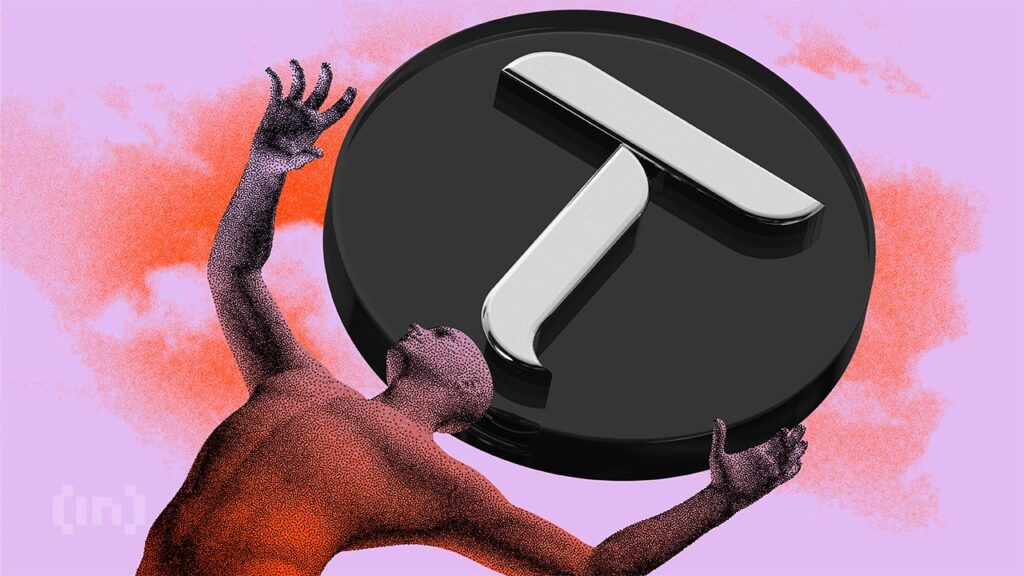Companies around the world are accelerating their efforts to integrate digital assets into their financial frameworks. Bitcoin (BTC) has been a go-to option, but many companies are now diversifying into major Altcoins such as Ethereum (ETH), XRP (XRP), and Solana (SOL).
In addition to these, AI tokens have emerged as compelling candidates for institutional investment. Recently, Synaptogenix has adopted Bittensor (TAO) as its reserve asset. In an exclusive interview with Beincrypto, Synaptogenix outlined the motivation behind this strategic move and why Tao was chosen over Bitcoin.
Why did Synaptogenix choose Bittensor (TAO)?
On June 9, Beincrypto reported that Synaptogenix, a clinical-stage biopharmaceutical company, has launched a TAO financial strategy to win $100 million worth of tokens. To begin with, the company announced that it would spend $10 million to purchase Tao using its cash reserves and balance sheet.
This amount, surpassing Double Synaptogenix’s current market capitalization of $4.98 million, underscoring its commitment and confidence in TAO. A spokesperson told Beincrypto the decision stems from belief in the undecided possibility of decentralized AI.
The spokesman explained that despite Crypto’s large $3 trillion market capitalization, it is undervalued in the public stock market. They pointed to the success of the strategy (previously micro-tactics) under Michael Saylor. Michael Saylor demonstrated that holding Bitcoin can have important benefits in the corporate Treasury Department.
Bitcoin represents a bet on “crypto as currency,” while Ethereum and Solana focus on decentralized finance. However, Synaptogenix sees even greater opportunities for crypto and AI convergence.
“AI companies have reached a market capitalization of nearly $500 billion, while TAO, the leading decentralized AI token, is valued at just $3 billion. Despite its growth, TAO’s value is undervalued due to the growing interest of decentralized AI,” the spokesperson said.
They highlighted that venture capital investments in decentralized AI increased 200% in 2024. In particular, as the largest AI token by market capitalization, Tao can benefit from an increase in institutional profits.
“We expect decentralized AI to ultimately outweigh intensive AI, and institutional interest in Tao continues in the lawsuit. Next year, demand for Tao will skyrocket, coinciding with a decline in the available supply of Tao tokens.
Bittensor (TAO) vs. Bitcoin (BTC): Which is better?
The discussion about Bitcoin vs. Bittensor has been running for quite some time. Recently, Barry Silbert, CEO of Digital Currency Group, predicted that Tao could surpass Bitcoin as a globally valuable store.
Synaptogenix agrees to this view. The spokesman said Bitcoin is a prime example of a store of value and a reliable asset.
However, they argued that Bittensor’s Tao Token would further embrace the concept of incentives and position it as a stronger candidate.
“Bittenser is that Bitcoin innovates into currency. Bitcoin, on the other hand, mirrors Bitcoin in many ways, but incentives play a much more important role in fostering social innovation, especially in decentralized fixed supply models.
According to them, Bitcoin Miners make around $10 billion a year and consume a huge amount of electricity to protect their networks. In contrast, TAO miners are rewarded for contributing to AI innovation through new AI businesses rather than AI models, computing power, or energy-intensive mining.
The road beyond Tao
Despite optimism about Tao’s potential, Synaptogenix emphasized that adopting the TAO financial strategy is not easy.
“Stake tokens like Ethereum and Solana are relatively simple, with token holders receiving rewards in exchange. However, optimizing TAO staking requires a deep knowledge of the TAO ecosystem.
They also highlighted that the company’s expertise in TAO’s ecosystems, Crypto, and Staking is well positioned to lead this strategy and maximize returns.
Nevertheless, the company still expects other institutional investors to follow. In addition to Synaptogenix, Technology Solutions provider Oblong has committed $7.5 billion to fund TAO Corporate Reserve.
As facility adoption grows, Synaptogenix expects Tao prices to rise significantly.
“Institutions tend to be purchasing and holding investors, meaning that as more institutions adopt TAOs, token supply decreases when trapped in long term holdings.
In addition to institutional interest, they pointed out several other catalysts, including half of the TAO, availability at Coinbase (exposed to 100 million customers), and rapid growth of subnets on the TAO platform. Furthermore, increasing involvement from hedge funds in crypto assets could further drive demand.
The AI market is projected to expand from $300 billion in 2025 to more than $3 trillion by 2030, so decentralized AI, particularly TAO, is expected to gain a significant share.
“As decentralized AI reaches a turning point, we believe that the first $1 billion business in the TAO/Bittensor ecosystem has significantly increased general and institutional interest and raised TAO prices to new heights,” the spokesman predicted.
With its strategic vision and its deep connection with the Tao ecosystem, Synaptogenix paves the way for a new wave of institutional investments in decentralized AI that can restructure financial markets.
Disclaimer
Following Trust Project guidelines, this feature article presents the opinions and perspectives of industry experts or individuals. Although Beincrypto is dedicated to transparent reporting, the views expressed in this article do not necessarily reflect the views of Beincrypto or its staff. Readers should independently verify the information and consult with experts before making decisions based on this content. Please note that our terms and conditions, privacy policy and disclaimer have been updated.

